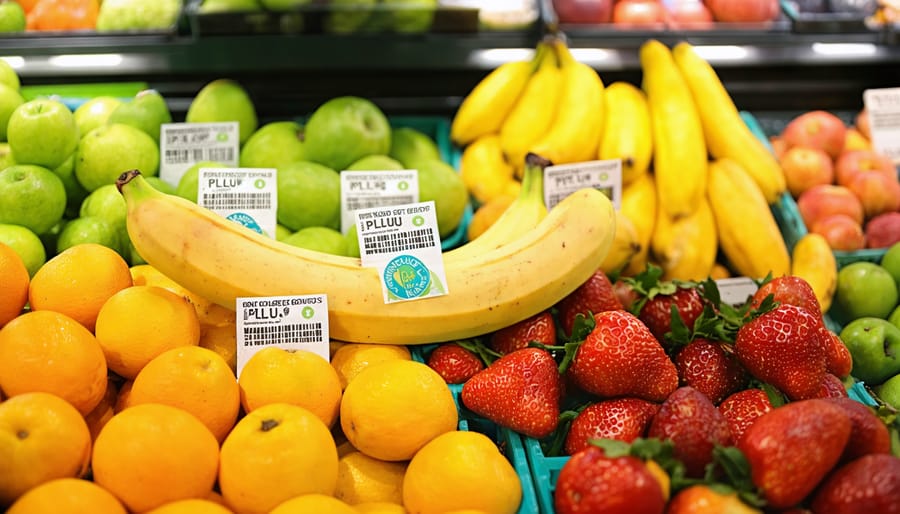What is Regenerative Organic Agriculture?

Soil Health
Regenerative organic agriculture places a strong emphasis on nurturing and revitalizing soil health. By implementing practices such as cover cropping, crop rotation, and reduced tillage, farmers can enhance soil fertility, structure, and biodiversity. These methods help to increase organic matter content, which improves water retention, nutrient cycling, and carbon sequestration. Healthy soils are more resilient to extreme weather events and can better support robust plant growth. Regenerative practices also minimize the need for synthetic inputs, reducing the environmental impact of farming. By prioritizing soil health, farmers in Alberta can build a foundation for sustainable, productive agriculture that benefits both their operations and the ecosystem as a whole. Adopting regenerative practices not only enhances the long-term viability of farmland but also contributes to the overall well-being of rural communities and the environment.
Biodiversity
Promoting biodiversity is a key principle of regenerative organic agriculture. By cultivating a diverse range of crops and supporting a healthy ecosystem, farmers can enhance soil health, reduce pest and disease pressure, and create a more resilient farming system. Biodiversity above and below ground is essential for nutrient cycling, carbon sequestration, and maintaining a balance in the agroecosystem. Practices such as cover cropping, intercropping, and agroforestry can increase biodiversity and provide habitats for beneficial insects, pollinators, and wildlife. Embracing the power of biodiversity not only supports the long-term sustainability of the farm but also contributes to the preservation of native plant and animal species in the region. By prioritizing biodiversity, regenerative organic farmers in Alberta can create thriving, resilient agricultural systems that work in harmony with nature and support the health of their communities.
Carbon Sequestration
Regenerative organic agriculture plays a vital role in mitigating climate change by capturing and storing carbon in the soil. Through practices like cover cropping, reduced tillage, and crop rotation, regenerative farming enhances soil health and increases its capacity to sequester atmospheric carbon. As plants grow, they absorb CO2 from the air and transfer it into the soil through their roots. By maintaining living roots in the ground year-round and minimizing soil disturbance, regenerative agriculture promotes the formation of stable soil aggregates that lock away carbon for long periods. This not only helps combat climate change but also improves soil fertility, water retention, and overall ecosystem resilience.
Regenerative Practices for Alberta Farmers
Cover Cropping
Cover cropping is a vital regenerative practice that can significantly improve soil health and prevent erosion on Alberta farms. By planting crops like legumes, grasses, or brassicas between main crop rotations, farmers can protect and nourish their soil. These cover crops add organic matter, enhance soil structure, and improve soil health by increasing beneficial microbes and earthworms. The root systems of cover crops help hold soil in place, reducing erosion from wind and water. They also absorb excess nutrients, preventing runoff and improving water quality. When terminated and incorporated into the soil, cover crops release nutrients for the next main crop. Incorporating cover cropping into your farm’s regenerative practices can lead to more resilient, productive soil and contribute to the long-term sustainability of your operation. By working with nature, Alberta farmers can build healthier agroecosystems that benefit both their farms and the environment.

Crop Rotation
Diverse crop rotations are a cornerstone of regenerative organic agriculture, offering numerous benefits for soil health and pest management. By alternating crops each season, farmers can prevent nutrient depletion and improve soil fertility naturally. Legumes, such as peas and lentils, fix nitrogen in the soil, reducing the need for synthetic fertilizers. Cover crops, like clover or rye, protect the soil from erosion and add organic matter when tilled under. Rotating crops also disrupts pest and disease cycles, minimizing the reliance on chemical pesticides. For example, alternating cereals with broadleaf crops can break the life cycles of pests that specialize in one type of plant. Farmers in Alberta are successfully implementing diverse rotations, such as canola-wheat-pea or barley-alfalfa-flax, to build soil health and resilience. By embracing crop diversity, farmers can create a more sustainable and self-regulating agricultural system that benefits both their land and the environment.

Integrated Livestock
Livestock play a vital role in regenerative organic agriculture, especially in nutrient cycling and pasture management. By integrating livestock into crop rotations and allowing them to graze on cover crops and crop residues, farmers can enhance soil health and fertility. As animals graze, their manure returns essential nutrients to the soil, reducing the need for synthetic fertilizers. Rotational grazing, where livestock are moved between pastures, prevents overgrazing and allows for plant recovery. This practice promotes deeper root growth, improves water infiltration, and increases soil organic matter. Additionally, grazing can help control weeds and pests, reducing the reliance on chemical interventions. By mimicking natural grazing patterns, regenerative organic agriculture harnesses the power of livestock to maintain healthy, productive pastures while also providing high-quality, grass-fed meat and dairy products. When managed properly, integrated livestock systems contribute to the overall sustainability and resilience of the farm ecosystem.
Reduced Tillage
Reduced tillage is a key component of regenerative organic agriculture that focuses on minimizing soil disturbance. By adopting practices like no-till or strip-till farming, Alberta farmers can preserve soil structure and protect the delicate ecosystem within the soil. These methods involve planting crops directly into residue from the previous harvest, reducing the need for plowing and cultivation. This approach maintains soil stability, reduces erosion, and promotes water retention. Additionally, reduced tillage helps to sequester carbon in the soil, contributing to climate change mitigation efforts. Farmers can also employ cover crops to further protect the soil surface and enhance soil health. By keeping soil disturbance to a minimum, reduced tillage practices promote a thriving soil microbiome, leading to improved nutrient cycling and overall soil fertility. Adopting reduced tillage methods not only benefits the environment but also saves farmers time and resources, making it a win-win solution for sustainable agriculture in Alberta.
Benefits for Farmers and the Environment
Improved Resilience
Regenerative organic agriculture practices enhance a farm’s resilience to the challenges posed by climate change and extreme weather events. By building healthy, nutrient-rich soils with increased water retention capacity, these practices help crops withstand periods of drought or heavy rainfall. Cover cropping and diverse crop rotations protect against soil erosion and improve soil structure, reducing the impact of intense storms. Regenerative methods also support biodiversity, creating ecosystems that are more adaptable to environmental stresses. For example, a study by the Rodale Institute found that regenerative organic corn systems had 31% greater yields than conventional systems during drought years. As Alberta farmers face the realities of a changing climate, adopting regenerative practices can help safeguard their livelihoods and ensure the long-term viability of their land. By investing in the health of their soil and ecosystems, farmers can build resilience and better prepare for the challenges ahead, while also contributing to a more sustainable future for Canadian agriculture.
Long-Term Profitability
Regenerative organic agriculture offers long-term economic benefits for farmers. By reducing reliance on costly inputs like synthetic fertilizers and pesticides, farmers can save money while improving soil health. Healthy soil requires less irrigation, further cutting costs. Diverse crop rotations and cover cropping can suppress weeds and pests naturally, minimizing the need for expensive treatments.
Moreover, the growing demand for organic and sustainably produced food opens up premium markets for regenerative products. Consumers are increasingly willing to pay more for food grown using environmentally friendly practices. By obtaining organic certification and highlighting their regenerative methods, farmers can access these higher-value markets and boost profitability.
Studies show that regenerative organic farms can be just as productive as conventional ones, with the added advantage of enhanced resilience to weather extremes. Investing in soil health pays off over time, as nutrient-rich soil supports consistent yields with fewer inputs. While transitioning to regenerative practices may involve initial costs, the long-term financial benefits make it a smart choice for forward-thinking farmers in Alberta and beyond.
Conclusion
In conclusion, regenerative organic agriculture offers a promising path forward for Alberta farmers seeking to enhance soil health, boost crop yields, and contribute to a more sustainable future. By embracing practices such as cover cropping, crop rotation, composting, and reduced tillage, farmers can work with nature to build resilient agroecosystems that benefit both their bottom line and the environment. As consumer demand for organic and sustainably produced food continues to grow, adopting regenerative organic practices can help Alberta farmers tap into new markets and strengthen their competitive edge. Moreover, by prioritizing soil health and biodiversity, regenerative organic agriculture can help mitigate the impacts of climate change, ensuring a more stable and prosperous future for Alberta’s agricultural communities. While transitioning to regenerative organic practices may require an initial investment of time and resources, the long-term benefits for farmers, their families, and the wider community are well worth the effort. As an Alberta farmer, you have the power to be part of the solution, leading the way towards a more regenerative and resilient agricultural landscape. By exploring the principles and practices of regenerative organic agriculture, you can help build a brighter, more sustainable future for generations to come.
For more information, explore how Canada’s forests can supercharge carbon capture on your farm and the benefits of no-till organic farming in building healthier soils and improving yields.









